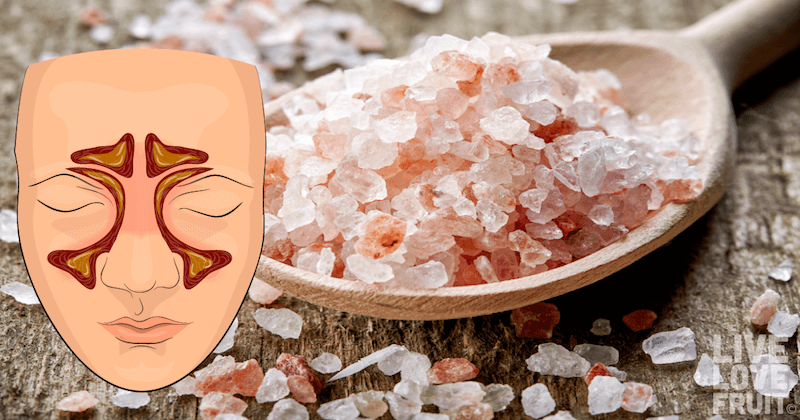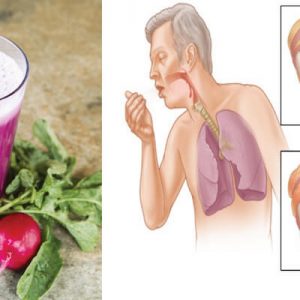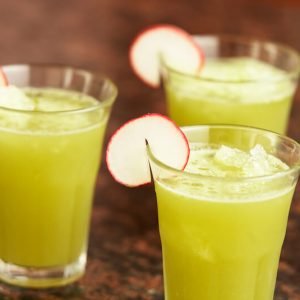
Have you ever noticed how your hair, skin, and lungs feel great after spending the day next to the ocean? Or why you always sleep more soundly the following nights?
That’s because the salt in seawater and sea air contains a massive concentration of trace elements and essential minerals we’re often lacking.
In fact, the positive effects of salt on airways were first noted in Eastern Europe in 1843, when a Polish doctor noted how salt miners didn’t suffer from the same respiratory problems as the general population. They had better immune systems, lung health, and sinus clarity compared to their families.
The theory is that salt helps reduce inflammation and mucus, thereby improving respiratory function and immune response. And the claims are true; Ancient Ayurveda has recommended for thousands of years, a saline nasal rinse as part of a healthy lifestyle to keep your sinuses and nasal passages clean.
And if you don’t live next to the ocean – not to worry. A Himalayan salt inhaler will do the trick.
What is Himalayan Salt?
Himalayan pink salt is often said to be the most beneficial, as well as cleanest salt available on the planet. It is classified as rock salt or halite, which comes from the Punjab region of Pakistan, about 190 miles from the Himalayas. This region has one of the richest salt fields in the entire world, and they date back to the Precambrian Age when the Earth was formed over 4 billion years ago (1).
Himalayan pink salt consists of sodium chloride, but also contains up to 84 different trace minerals, like potassium, magnesium, and calcium (2).
Although salt is given a bad rep, this is often the standardized table salt we see being sold at grocery stores. Table salt is very heavily processed, eliminating its minerals. Commercial table salt contains 97.5-99.9% sodium chloride, whereas a high-quality unrefined salt like Himalayan sea salt is only about 87% sodium chloride (3).
Table salt also undergoes a bleaching process and contains aluminum derivates, as well as other ingredients that are known toxins. Yellow prussiate of soda is also added to table salt, which is incredibly health-hazardous.
If you’re still concerned about sodium, be minimal with your use, and ensure that you’re using a high-quality salt like Himalayan pink salt! Salt is actually necessary for functions of the body like sending nervous system impulses, contracting and relaxing muscles, and maintaining proper fluid balance in the body.
Benefits of Himalayan Salt
There are many awesome benefits of Himalayan salt, with the following being the best.
1. Improves Respiratory Problems
According to the Lung Institute, salt is antibacterial, anti-inflammatory, loosens mucus and speeds mucus clearance, removes pathogens in the air, and decreases IgE levels (immune system oversensitivity) (4).
Halotherapy, or salt therapy, is the inhalation of micronized dry salt within a chamber that mimics a salt cave – this is where a Himalayan salt inhaler comes it. Studies have shown that halotherapy is a highly effective drug-free part of treating chronic bronchitis (5).
2. Promotes Immunity
Inhaling Himalayan pink salt prevents bacterial infections from forming in the airways, and can also reverse their effects, too. It works by promoting phagocyte (white blood cell) activity, which essentially kills all fungi and other pathogens that might be lurking in our airways (6). Not only that, but it helps promote relaxation of the central nervous system, which improves immunity.
3. Improves Sleep
Himalayan pink salt is said to encourage better, more restful sleep due to its high mineral content. Using a Himalayan salt inhaler prevents infection, allergies, and respiratory inflammation – it can help prevent coughing, shallow breathing and snoring. So instead of struggling with these issues, you’ll finally be able to get some much-needed rest.
4. Clears Mucus Buildup
Salt molecules contain negatively charged ions – it’s what makes the ocean air so beneficial to be around. When inhaled, these ions travel through the sinuses and into the respiratory tract, where they thin out mucus and destroy bacteria by forming ionic bonds with contaminants (7). As these pollutants are expelled from the body, they safely relieve congestion.
5. Balance’s the Body’s pH
The rich mineral content of Himalayan pink salt can naturally balance your body’s pH levels. Making sure your pH levels are in balance is important because most of us have a pH level that is more on the acidic side (as a result of poor diet, lifestyle and environmental toxins). When our pH levels are more acidic, it creates conditions in the body that promote chronic disease. A proper pH helps improve immunity and encourages good digestion.
6. Soothes Inflammation
Studies have found that inhaling salt diminishes the edema of the bronchial mucosa to decrease inflammation. It can actually reduce the frequency of respiratory tract inflammation, such as chronic upper airway inflammation, chronic obstructive pulmonary disease and sinus infection (8). It can even work against the irritation caused by exposure to second-hand smoke, allergens, and air pollution.
How to Use a Himalayan Pink Salt Inhaler
Ceramic Himalayan pink salt inhalers are easily found at most natural health food stores, and online. Whatever you do, do not use a plastic inhaler.
This is how you use it:
- Two or three days before use, rinse out the inhaler with warm tap water, and let it dry out completely. Do not use soap.
- Once the inhaler is dry, place your Himalayan pink salt in the ceramic inhaler according to the directions on the package. It is best to use larger chunks of pink salt.
- Place the inhaler mouthpiece in your mouth, and breathe normally (inhale through the mouth, and exhale through the nose). Take deep breaths, and do this for 15-20 minutes.
- To clean, remove the salt and wash the outside of the mouthpiece with warm saltwater. Do not put in the dishwasher.
- Keep the inhaler dry, in a clean place. Replace the salt every two years or so, as needed.
Instead of a salt inhaler, you can also do it the old fashioned way by doing the following:
- Heat 4-8 liters of water until boiling.
- Add the salt (2 tablespoons for each liter of water), and let it dissolve.
- Cover your head with a towel and inhale the vapors, keeping your face far enough away from the hot steam so as to not burn yourself.








This works great! I use mine every morning to clear congestion both in the sinuses and airways. It's amazing how much relief you get! I had sinus headaches typically late morning most day and would have to take Tylenol Sinus or other meds, I honestly haven't taken these in weeks. I also have sensitive airways due to asthma and allergies, there has been great relief and hardly any coughing during the day. I still use Advair puffer before bed, maybe I can stop using this in time if I keep up with the salt inhaler, maybe use this at night as well. It's truly amazing!!
Thanks for the awesome testimonial Kim! Himalayan pink salt is truly amazing! 🙂
Carly where did you purchase yours so I know I’m getting a genuine one?
This company is one of the best. The way they mine it is safe in my standards! No risk for heavy metal contamination: https://www.himalayancrystalsalt.com/
Can this be done with a Netti-pot? Can I get the same results?
Yes, you can mix 1/2 teaspoon celtic sea salt or himalayan sea salt in 1 cup warm water, put into a neti pot, and rinse.
I have a neti pot and was just wondering this same thing while reading your article. Thanks for the answer! Love your articles!
This is a different device, but neti pots are great for clearing the sinuses too if you use himalayan salt!
How often do I do this?
You can do it every day, even up to twice a day if it provides relief.
I’m on a cpap when would be a good time to do it?
Any time would be beneficial. Is there any time when you are not on the machine? If so, then do it at that time.